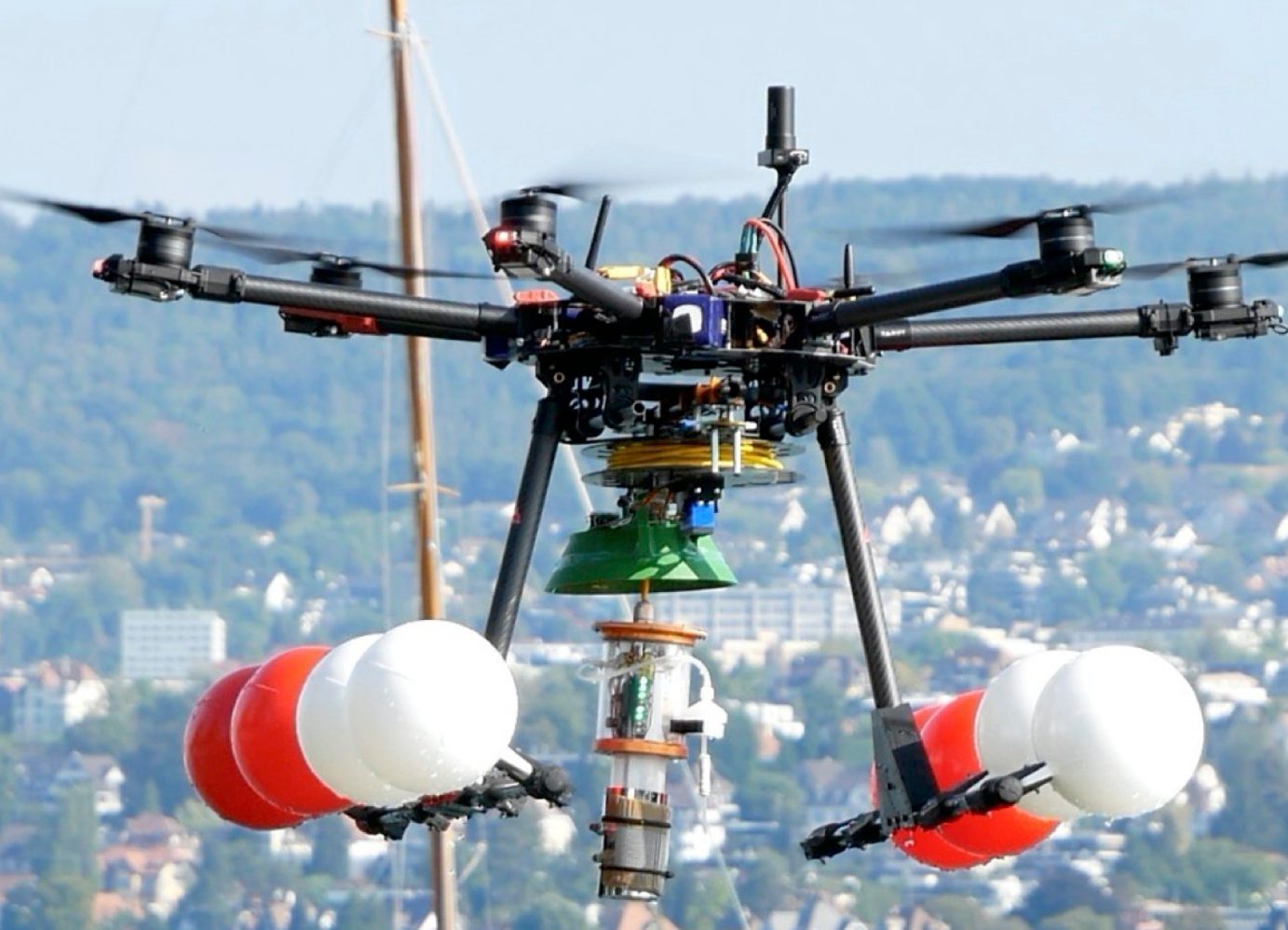
Researchers at Imperial College London have developed a shape-shifting drone that can both fly through the air and float on a water surface. This Multi-Environment Dual robot for Underwater Sample Acquisition, aka MEDUSA, drone can also extend its “tentacles” underwater to collect samples and monitor water quality.
MEDUSA is a multirotor drone that ecologists can fly to a hard-to-reach aquatic environment, instead of sending boats and putting human workers at risk. The drone has floats attached to its landing gear, which allows it to stay above the water surface. Once it has landed on the water, MEDUSA deploys its tethered mobile underwater pod, which is armed with a camera and sensors, and can dive to depths of up to 10 meters.
The drone operator can remotely adjust the pod’s depth and position in the water, guided by real-time video and sensor feedback from the pod. And once water samples are taken, the drone reels in the cable and retracts the pod before taking off and flying back to the user.

The “dual robot” drone was recently tested at Switzerland’s Lake Zurich in collaboration with research institutes Empa and Eawag. During the experiments, MEDUSA successfully examined the water for signs of microorganisms and algal blooms that can pose a threat to human health.
But in the future, researchers say, it can also be used to monitor climate indicators such as temperature changes in the Arctic waters or to help maintain offshore infrastructures such as underwater energy pipelines and floating wind turbines.
Professor Mirko Kovac at Imperial’s Department of Aeronautics says:
We have much to learn from the Earth’s water: by monitoring ecological parameters we can identify trends and understand the factors affecting water quality and the health of the ecosystem in a changing climate. MEDUSA’s unique ability to reach difficult places and collect aquatic images, samples and metrics will be invaluable for ecology and aquatic research and could support our understanding of local climate in difficult-to-access environments like the Arctic.
You can see MEDUSA in action in the video below:
A New York-based drone services company presented a similar water sampling and data collection system last year, in which a lockable bottle cradle was attached to DJI M600 and M300 RTK drones.
Read: Autonomous underwater drone to help seafood industry reduce costs
FTC: We use income earning auto affiliate links. More.





Comments